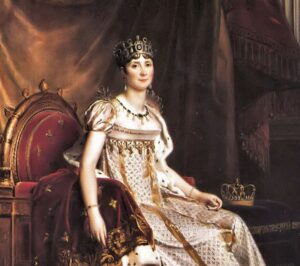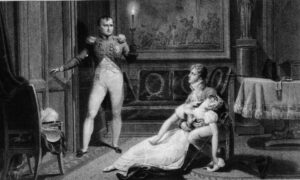Sometimes I look at books like The Hunger Games and forget that their target audience is young teens.
Take a choice line from The Hunger Games like:
“A boy, I think from District 9, reaches the pack at the same time I do and for a brief time we grapple for it and then he coughs, splattering my face with blood (Collins 2008, 106).”
Yikes.
Not sure about how I’d feel reading that line as a thirteen-year-old boy.
And yet, violent forms of art aimed at teens, are extremely popular. The Hunger Games came in second to Harry Potter in NPR’s poll ranking the top 100 teen novels.
So what’s going on here?
The novel teaches teens about violence. In Suzanne Collin’s own words: “I don’t write about adolescence. I write about war. For adolescents.” The Hunger Games teaches younger readers three lessons: 1) violence and dark themes exist in life, 2) violence should only be used as a last resort to end other violence, and 3) violence should not be celebrated, even when its use is justified.
Violent Portrayals in Children’s Books
Before getting into those lessons, however, let me clarify what I mean by violence in The Hunger Games. Literature or film typically portray violence in two ways: euphemistic or literal.
On the one hand, a euphemistic portrayal of violence focuses on the outcome of the violence, not the gory details. Boromir’s death at the end of Fellowship of the Ring is a good example of this kind of depiction. Though wounded by many arrows, Boromir does not writhe around the forest floor screaming in pain. Rather, he remains calm and stoic, acknowledging Aragon as his king before quietly passing away.
On the other hand, a literal depiction of violence is realistic, sometimes even exaggerating the violence’s more horrific aspects. The death of Oberyn Martell in Game of Thrones is an example of this kind of depiction. Unlike Boromir, Oberyn does not receive a heroic, bloodless send-off. Instead, his skull is crushed and brains exposed to the viewer.
Which method the authors uses depends on how much the author wants to emphasize the violence. Since most children’s literature wants to shield children from the horrific nature of violence, children’s stories almost always use a euphemistic description.
Take, for example, the story of St. George and the Dragon, as portrayed in the The Book of Virtues, a compilation of children’s stories for the moral education of children. In the story, St. George is an honorable knight who searches for a village needing his help. Eventually, he crosses paths with a dragon, which he gallantly slays, saving the village. The focus is on St. George’s chivalry, and as such, the story downplays the violent nature of the fight: “St. George…struck with all his strength down the dragon’s throat, and [it] fell at [his] horses feet — dead.” The killing stroke is precise and bloodless. George is clearly the hero and the dragon is clearly the villain.
Imagine, for a moment, if we changed that passage to a more literal description: “The dragon made a gurgling noise as blood gushed from the wound. As he gave his sword one final push into the dragon’s foul-smelling mouth, George heard a terrifying, sorrowful shriek that made him for a moment think the dragon was calling out to its mother.” By describing the violence more realistically, the passage simultaneously humanizes the dragon and casts doubt on St. George’s morality. What kind of saint sends his enemies away shrieking and blood-spattered?
Violence Exists
The depictions of violence in the Hunger Games cross between euphemistic and literal. Violence inflicted upon good, sympathetic characters almost always receives a euphemistic description. Violence inflicted upon bad or anonymous characters almost always receives the literal description. In this way, The Hunger Games cleverly varies its descriptions of violence as a way to introduce teens to the horrors of violence without disturbing them too much.
Take, for example, the quote I started with.
“A boy, I think from District 9, reaches the pack at the same time I do and for a brief time we grapple for it and then he coughs, splattering my face with blood (Collins 2008, 106).”
The boy doesn’t just die. He sprays blood all over Katniss’ face, suggesting he had moments of horrifying despair before he finally perished. And Katniss is so close to the violence that she gets literally covered in it.
Remember, this is just a “boy”—not a hulking predator like the other competitors, but a mere child who never wanted to be at the games and will never get to experience the fullness of life.
For teens that grew up on Disney movies, this death, the first in the book, is probably disturbing. It suggests that the world is crueler than they originally thought.
At the same time, the boy’s anonymity softens his death. We don’t know the boy’s goals, how much he meant to others, or what he was thinking when he died. In fact, Katniss does not even know who he is; she only “thinks” he was the boy from District 9. Without a story behind the boy, we aren’t able to put ourselves into the boy’s shoes and see the violence as something that could happen to us, which is much more terrifying.
Imagine, for a moment, that it was Peeta—the boy who courageously gave Katniss bread to save her from starvation, who has hopelessly fallen in love with a girl who does not yet love him back, whose only wish is to not let the Capitol change him through the games—rather than the anonymous boy that was killed in this manner. Not only would it be exceedingly dark to see such a heroic character extinguished in such a violent way, but it would also be more disturbing to the young reader, who, through knowing Peeta, could more easily compare himself to Peeta, and thus, imagine the violence happening to him in real life.
In fact, every major death in The Hunger Games follows the same pattern. If the character is evil or anonymous, the death is gruesome. If they are good, the death is softened or not presented to the reader:
Memorable Deaths in The Hunger Games
| Character | Good, Evil, or Anonymous | Type of Death |
|---|---|---|
| Boy from District 9 | Anonymous | Hit in back by knife. Coughs out blood on Katniss before dying. |
| Glimmer | Violent stings by trackerjackers. Horribly disfigured. | |
| Rue | Spear through belly. Laid to rest peacefully. We are told she is safe. | |
| Clove | Bludgeoned to death by stone. Shrieks horribly for help before it happens. | |
| Thresh | Unknown. | |
| Cato | Mauled by giant hounds. Put out of misery by Katniss after long suffering. |
This pattern introduces violence without overwhelming young readers.
Is Violence Ever Ok?
The book does more than just introduce young readers to darkness in the world through violence; it also teaches them about the appropriate times to use violence against others. Collins channels her message through her protagonists, who only use violence when it is necessary to end other violence.
For example, Katniss’ only premeditated, direct killing of another character comes at the end of the book when she shoots Cato with her arrow. The description of violence here is a literal one – as Katniss listens to Cato’s moaning after being mauled by giant dogs, she thinks, “After a very short time, I don’t care who he is or what he’s done, all I want is for his suffering to end,” and later, “There will never be anything but cold and fear and the agonized sounds of the boy dying in the horn” (Collins 2008, 239).
These two thoughts represent a radical change of heart within Katniss. Whereas before Cato had been the predator, the object of fear throughout her time in the games, the man who had delighted in killing others, he now is the object of pity because of his suffering. Indeed, Katniss describes him as just a “boy,” humanizing him and implicitly forgiving him for his evil ways due to his innocence.
As such, the heroine’s sole premeditated act of violence against another competitor during the games serves to end the suffering of another. Collin’s, I think, means to show young readers how to appropriately use violence through Katniss.
Even Then, Violence Should Not Be Celebrated
Even when the use of violence is justified The Hunger Games still teaches young readers that violence is never something that should be celebrated.
For example, even after Katniss and Peeta think they win the games, the suffering they just witnessed and the violence they used to end the games erase all the happiness their victory should bring them: “‘Then we won, Katniss,’ he says hollowly. ‘Hurray for us,’ I get out, but there’s no joy of victory in my voice” (Collins 2008, 239).
Remember Peeta just experienced a miracle—he and the love of his life managed to survive a battle royale in which only one contestant typically wins. Yet, his “hollow” voice demonstrates that the suffering of others that preceded this miracle has overshadowed it. That Katniss can barely get out her sarcastic celebratory comment also illustrates that she too feels like the victory is tainted, despite the fact that she just accomplished her dream of returning to her sister at home.
By neither celebrating nor rationally dismissing the negative emotional associations they have towards violence, the protagonists show young readers that violence is never fully acceptable, that there is always something inherently “wrong” or “evil” about it.
Is This Happening Elsewhere?
I’m not sure if there are as many teen novels as violent as The Hunger Games, but my guess is that even when these novels incorporate dark, violent themes, like Harry Potter, they follow a similar pattern. Descriptions of violence are confined to anonymous or evil characters, and there is some kind of lesson the author is trying to pass on to younger readers through the themes in the book.
I’d also imagine that teens gravitate towards these kinds of books because they reveal an underlying truth without overwhelming teens. Know of any other examples? Feel free to pass them along to us: [email protected].



